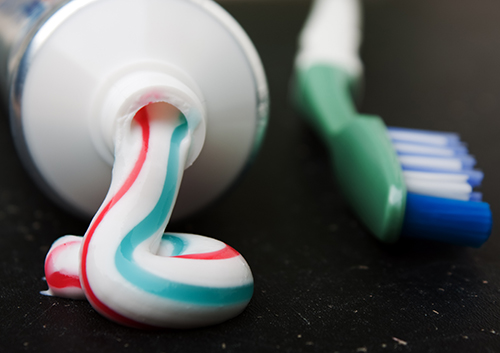October 2nd, 2018

As we all know, or should by now, the key to maintaining great oral health is keeping up with a daily plan of flossing, brushing, and using mouthwash. These three practices in combination will help you avoid tooth decay and keep bacterial infections at bay.
At Dental Comfort Center, we’ve noticed that it’s usually not the toothbrush or floss that people have trouble picking, but the mouthwash.
Depending on the ingredients, different mouthwashes will have different effects on your oral health. Here are some ideas to take under consideration when you’re trying to decide which type of mouthwash will best fit your needs.
- If gum health is your concern, antiseptic mouthwashes are designed to reduce bacteria near the gum line.
- If you drink a lot of bottled water, you may want to consider a fluoride rinse to make sure your teeth develop the level of strength they need.
- Generally, any mouthwash will combat bad breath, but some are especially designed to do so.
- Opt for products that are ADA approved, to ensure you aren’t exposing your teeth to harmful chemicals.
- If you experience an uncomfortable, burning sensation when you use a wash, stop it and try another!
Still have questions about mouthwash? Feel free to ask Dr. Cody Henriksen during your next visit to our Sioux Falls, SD office! We’re always happy to answer your questions. Happy rinsing!
September 25th, 2018

Dr. Cody Henriksen and our team recommend that you brush your teeth two to three times a day, for at least two minutes each time. But have you ever wondered what’s in toothpaste and how it actually works? The mouth is home to more than 500 types of microorganisms that feed on leftover food that gets stuck on and around your teeth. Toothpaste is the best line of defense against all those pesky microorganisms (especially when you brush two to three times a day). Here’s how it works.
Abrasives
Toothpaste contains mild abrasive additives that combat microorganisms and fight plaque. When you brush, the abrasives in toothpaste dislodge food particles and microorganisms more effectively than if you simply brush your teeth with water. The abrasives also work to remove food stains and polish the surface of the tooth. Some toothpastes include ingredients like triclosan and Xylitol. These chemicals prevent the growth of bacteria that produce plaque. Plaque not only causes cavities, but it can also lead to more dangerous issues like periodontal disease.
Fluoride
Fluoride is key ingredient in toothpaste. As the microorganisms in your mouth feed off the leftover food particles, they leave behind acid and sulfur byproducts that wear away the enamel of the teeth. This is the fancy, technical way of saying that the acid on your teeth causes cavities. As for the sulfur byproduct –well, that’s just a fancy, scientific name for bad breath. Fluoride works to fight the acid and help protect the teeth. By brushing, the fluoride is incorporated into the tooth enamel, which in turn makes the tooth more resistant to acid and plaque.
Flavoring and Sweetening Agents
Not all toothpaste tastes the same, right? The type of flavoring or sweetening agents added to the toothpaste doesn't have anything to do with fighting microorganisms and plaque, but taste is one of the most important selling points in finding a toothpaste brand you like. Flavoring agents mask the taste of some of the other ingredients in toothpaste, and without those agents chances are nobody would be brushing their teeth two to three time a day.
September 18th, 2018

When we talk about teeth, every single one of yours counts. Whether you’ve lost a tooth due to injury or poor oral hygiene, it’s worth seeing Dr. Cody Henriksen to evaluate all your replacement options. If you don’t, you could suffer negative effects to your teeth, gums, jawbones, appearance, and self-esteem.
Depending on how many teeth are missing and where they are located, Dr. Cody Henriksen may suggest an implant, fixed bridge, or a removable bridge.
Addressing missing teeth as soon as possible is in your best interests. If you don't, the consequences might include:
- Shifting teeth: When you lose a tooth, the space it creates allows the neighboring teeth to drift and move out of alignment. A once-straight smile and correct bite can quickly turn into crooked teeth and a misaligned bite.
- Tooth decay and/or gum disease: After teeth have shifted, it can be harder to reach all areas around them to brush and floss properly. The buildup of bacteria and plaque can result in periodontal disease and the loss of your remaining teeth due to decay.
- Effect on jaws: Missing teeth alter your bite and how your teeth and jaws contact one another. This puts added strain on your jaw joint (TMJ) and can contribute to the development of TMJ disorder.
- Change in face and appearance: When you lose a tooth, your gums and your jawbone are no longer stimulated in that area. A dental implant replaces the root of a tooth or several teeth, and provides stimulation to prevent bone loss. If the root isn’t replaced, this can lead to deterioration of the jawbone and alteration of the shape and appearance of your face. Your face, especially the cheeks, can look older and more sunken.
Replacing missing teeth is an essential step for your physical and emotional health. If they are replaced in a timely manner at our Sioux Falls, SD office, you’ll continue to have the same wonderful smile you’ve always had.
September 11th, 2018

Nobody can predict a dental emergency. That’s what makes them so terribly inconvenient. The good news is that our office is always available to assist you, so there’s no reason you should minimize an emergency.
Among the most common emergencies we see are lost fillings, lost crowns, and broken dentures. Lost fillings and lost crowns are very similar. A key difference, however, is that fillings are used to repair cavities but crowns are used to cover broken or damaged teeth.
Over time, it’s not uncommon for fillings and crowns to grow loose and fall out. If you lose a crown or a filling, hot or cold temperatures will likely begin to trigger pain because of the exposed tissue. The discomfort might seem manageable, but it’s better to get these situations fixed as soon as possible so you can avoid getting food stuck or developing an infection.
Unlike a busted filling or crown, a broken denture is more likely to make itself known constantly, every day. It can make chewing, swallowing, and eating properly difficult. Depending on the damage, you may require a new denture altogether.
If you’re experiencing any problems with your dentures, or suspect that they might be broken, it’s best to contact our Sioux Falls, SD office immediately to avoid further damage. Dr. Cody Henriksen and our team are always here to help, especially when your dental health is at risk.
These things happen, so don’t feel embarrassed and please don’t hesitate to give us a call as soon as you notice or suspect something’s wrong! Get in touch with us … the sooner the better.



